I love to compare stitches and talk about them with my grandma. Just a few days back, I compared a blind stitch to a normal stitch. But I recently came across people comparing the lock stitch vs blind stitch.
But why do people compare them? Well,
Blind Vs Lock Stitch
It’s because they serve two very different purposes. The lock stitch is known for its strength and durability. On the other hand, the blind stitch is all about invisibility. It gives you a nearly seamless finish.
So, which one should you use and when? That’s exactly what we’re tackling. Let’s break it down.
At a glance
- Lock stitch is for strength and durability, while blind seam is for a nearly invisible finish.
- The lock stitch is visible on both sides, whereas the blind stitch remains hidden on the front.
- Lock stitch is found in everyday seams like jeans and upholstery, while blind stitch is used for hemming and fine finishing.
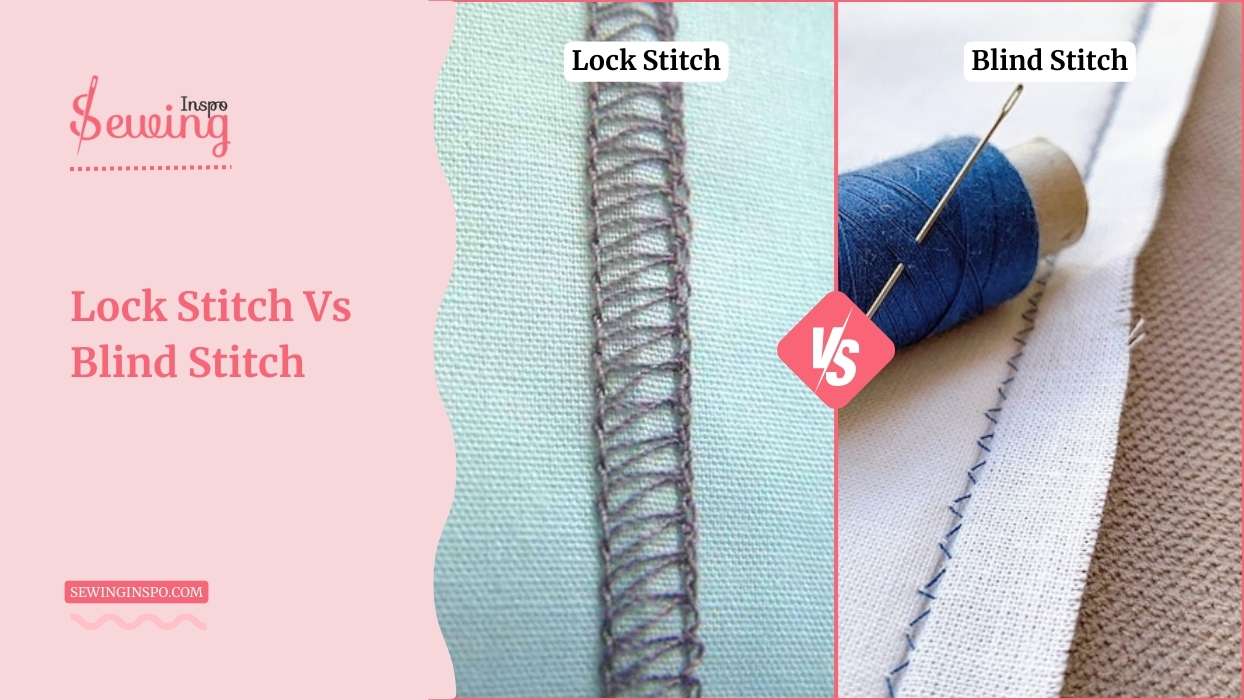
Table of Contents
What Is A Blind Stitch?
A blind stitch is a nearly invisible hand stitch used mainly for hemming garments.
It’s called “blind” because most of the thread stays hidden between fabric layers, with only tiny stitches visible on the outside, if at all.

Lock Stitch vs. Blind Stitch – What Sets Them Apart?
Both the lock stitch and blind stitch have their unique roles. And both stitches are totally different from each other. While one is about strength and durability between lock stitch and blind stitch.
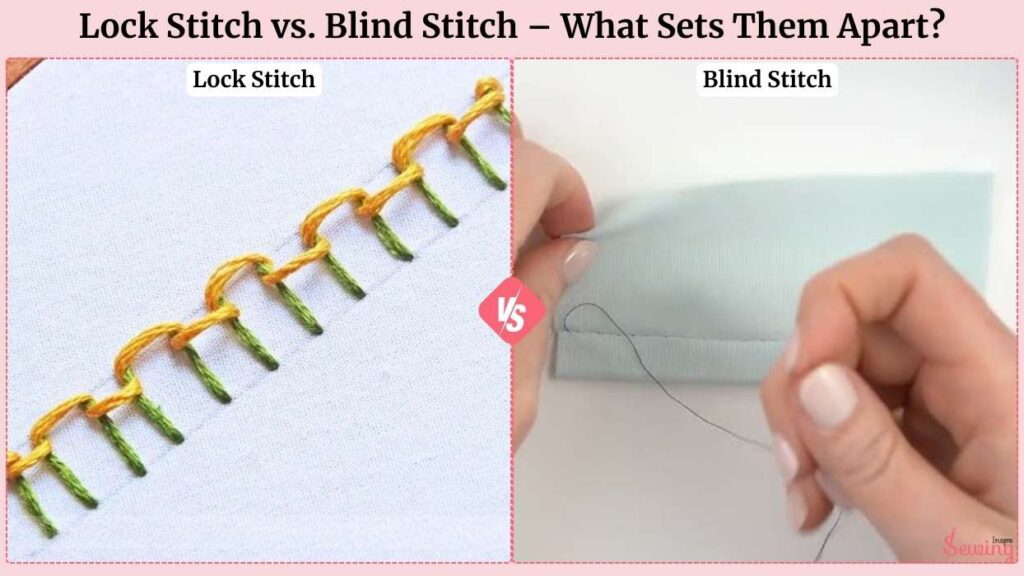
Let’s break down the key differences of both stitching styles, And understand the difference between lock stitch vs blind stitch.

Purpose (Strength vs. Invisibility)
The biggest difference between a lock stitch and a blind stitch is their purpose. A lock stitch is designed for strong, secure seams that hold fabric layers together firmly. It’s commonly used in garments, upholstery, and even heavy-duty sewing. That’s why it is in the strongest hand sewing definition.
Meanwhile,
A blind stitch look is all about subtlety. It’s meant to be nearly invisible from the front. It is ideal for hemming skirts, trousers, and delicate fabrics where you don’t want the stitches to show. The folded technique makes it perfect for that.
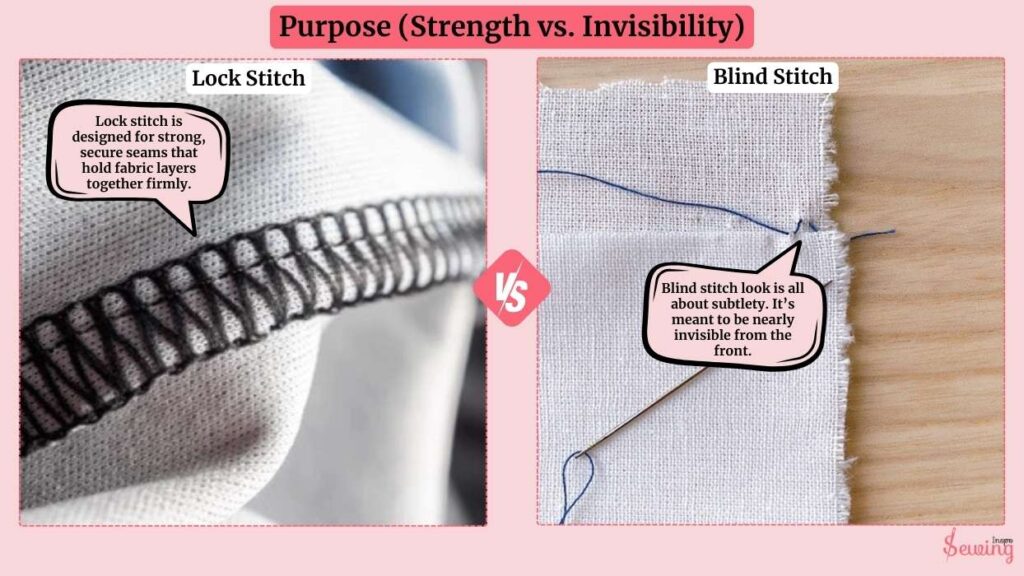
Stitch Structure (Locked vs. Looped)
A lock stitch interlocks 2 threads (one from the top and one from the bottom) to create a firm, tight seam. This gives it a stronghold and prevents the fabric from coming apart easily.
On the other hand,
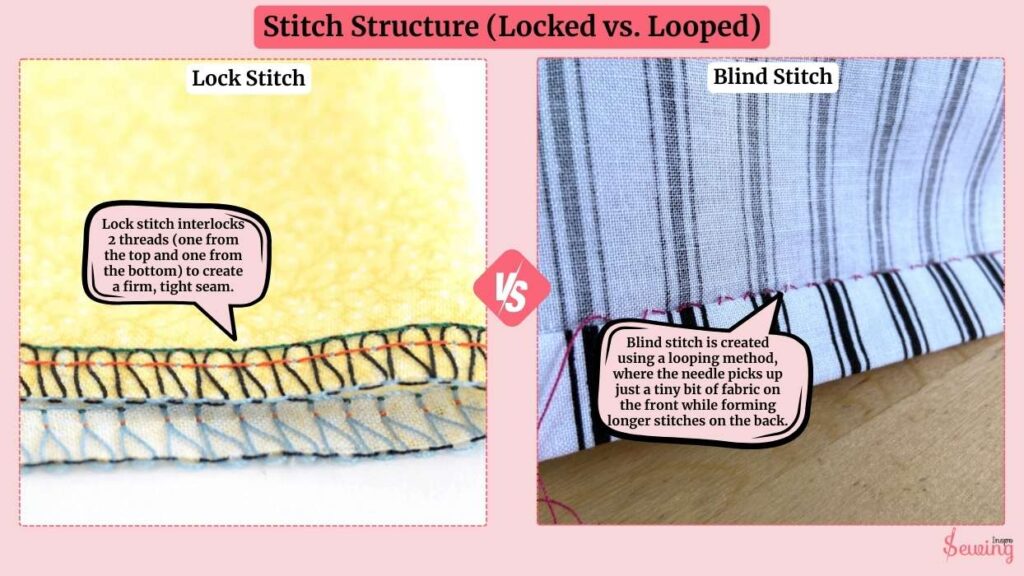
A blind stitch is created using a looping method, where the needle picks up just a tiny bit of fabric on the front while forming longer stitches on the back.
This clever technique makes the stitches almost invisible when done correctly.
Visibility (Obvious vs. Hidden)
If you look at a lock stitch, you’ll see the stitches on both sides of the fabric. It’s like threading through the wrapping stitches.
In contrast,
A blind stitch is meant to stay hidden on the front side of the fabric. It is blending in so well that it’s barely noticeable. That’s why you need to choose right thread for blind stitch.
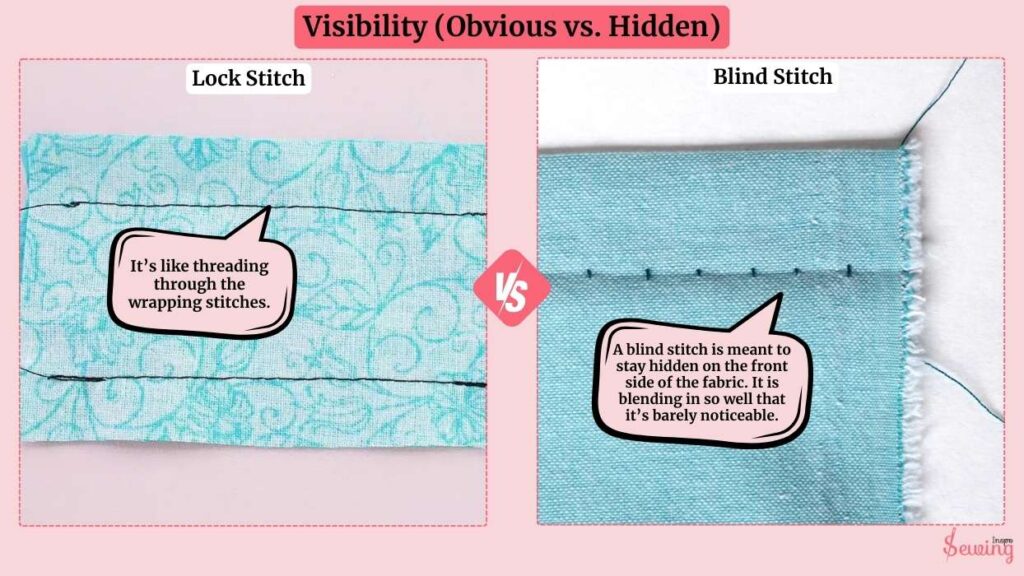
Common Uses (Everyday Seams vs. Fine Finishing)
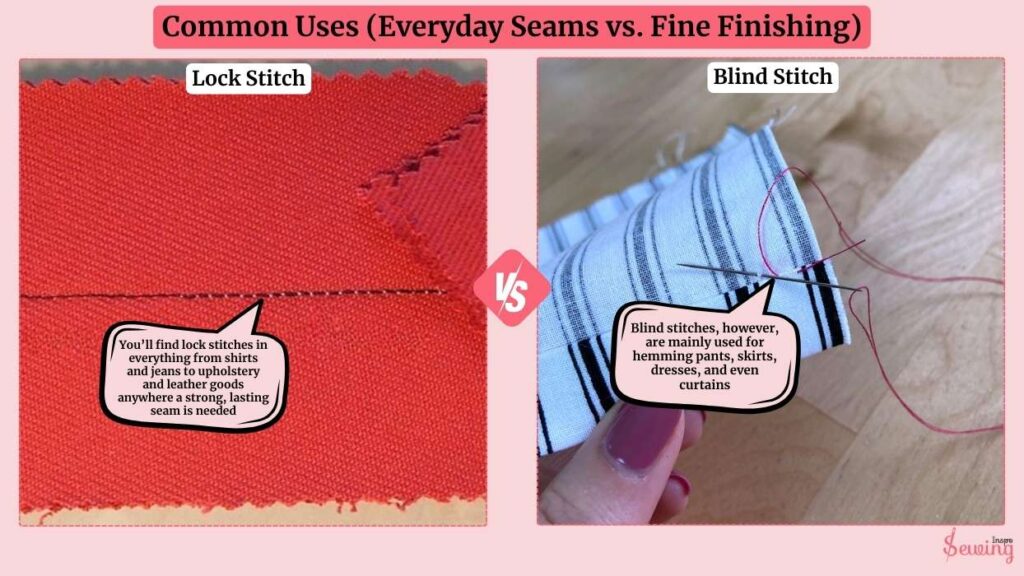
You’ll find lock stitches in everything from shirts and jeans to upholstery and leather goods—anywhere a strong, lasting seam is needed. Blind stitches, however, are mainly used for hemming pants, skirts, dresses, and even curtains. Just like you can do double hemstitch on it, too.
Lock Stitch Vs Blind Stitch Difference At A Glance
Look at the table if you want the difference at a glance.

| Feature | Lock Stitch | Blind Stitch |
| Visibility | Clearly visible on both sides of the fabric. | Almost invisible from the outside (front) of the fabric. |
| Application | Used for seams, topstitching, and strong constructions. | Used for hemming pants, skirts, curtains, etc., where invisibility is preferred. |
| Strength | Very strong and durable. | Less strong; more delicate. |
| Threads Used | Two (needle thread + bobbin thread). | One (needle thread loops with minimal penetration). |
| Appearance | Uniform and straight lines of stitching. | Hidden, zigzag stitch with minimal visibility. |
| Common in | Garment construction, upholstery, leatherwork. | Dress in pants, formal wear, drapery, and invisible hems. |
| Flexibility | Less flexible, more secure. | More flexible, but may unravel with stress. |
| Ease of Removal | Difficult to remove once stitched. | Easier to remove for alterations. |
What Is The Similarity Between Lock Stitch Vs Blind Stitch?
At first glance, lock stitch and blind stitch seem like total opposites; one is built for strength, and the other is for invisibility.
But guess what?
They do share a few things in common! Both are stitches that lock 2 fabric edges together. And they each rely on interlocking threads to hold the fabric together.
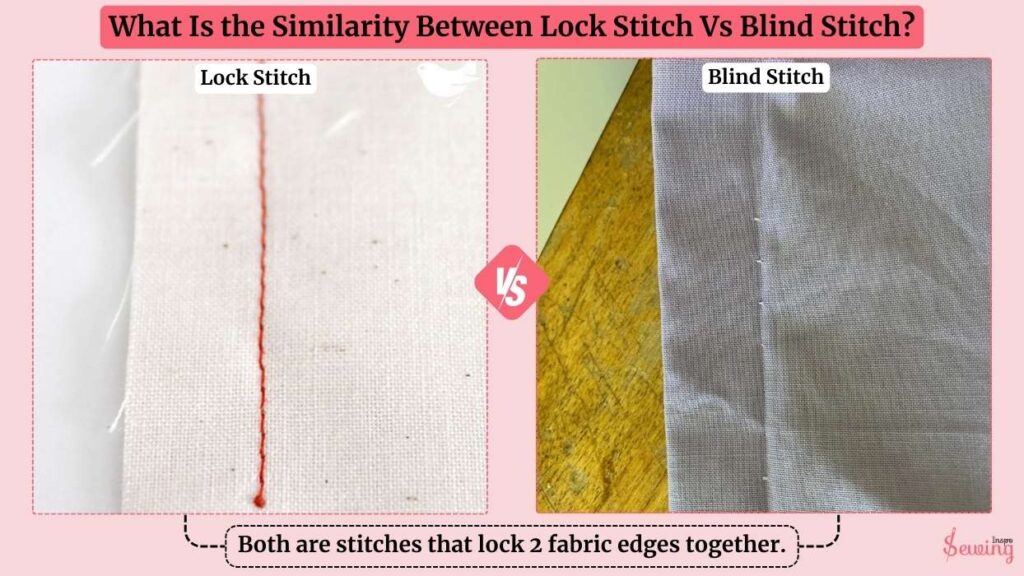
Lock Stitch Or Blind Stitch Which One Should You Use?
It all comes down to what you’re sewing. If durability is your priority, the lock stitch wins hands down. But if you want a discreet, seamless look, the blind stitch is your best bet.
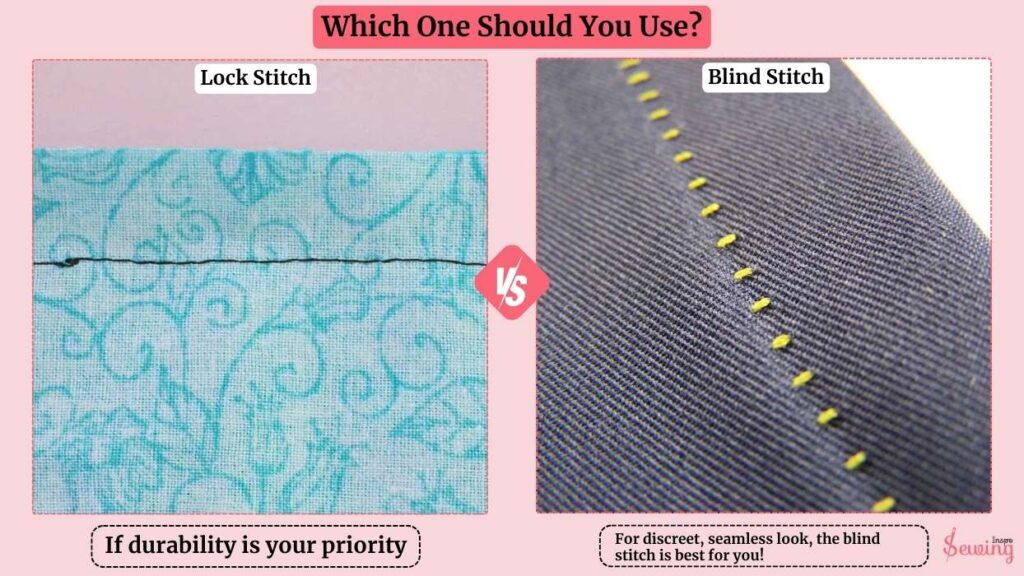
But if you ask me to choose one of them, then I would choose blind stitch. Cause it is easy to do and stay hidden. It’s no hassle at all to start a stitch.
Frequently Asked Questions
Can A Lock Stitch Be Used Instead Of A Blind Stitch?
Technically, it won’t give you the same clean, invisible finish. A lock stitch is visible on both sides of the fabric, while a blind stitch is meant to be hidden. If you need a discreet hem, the blind stitch is the better choice.
Can You Do A Blind Stitch With A Sewing Machine?
Yes! Many sewing machines have a blind stitch setting that mimics the hand-sewn version. It takes a little practice to get it right, but it’s a great way to speed up hemming while keeping the stitches nearly invisible.
When Should I Choose A Lock Stitch Over A Blind Stitch?
If you need a strong seam that won’t come apart, go for the lock stitch. If you’re working on a hem or a project where stitches should remain hidden, the blind stitch is the way to go.
Conclusion
So yeah, that’s the deal with lock stitch vs blind stitch.
Is it clear to you now?
If yes, then which one will you choose to secure the fabric edge from now?


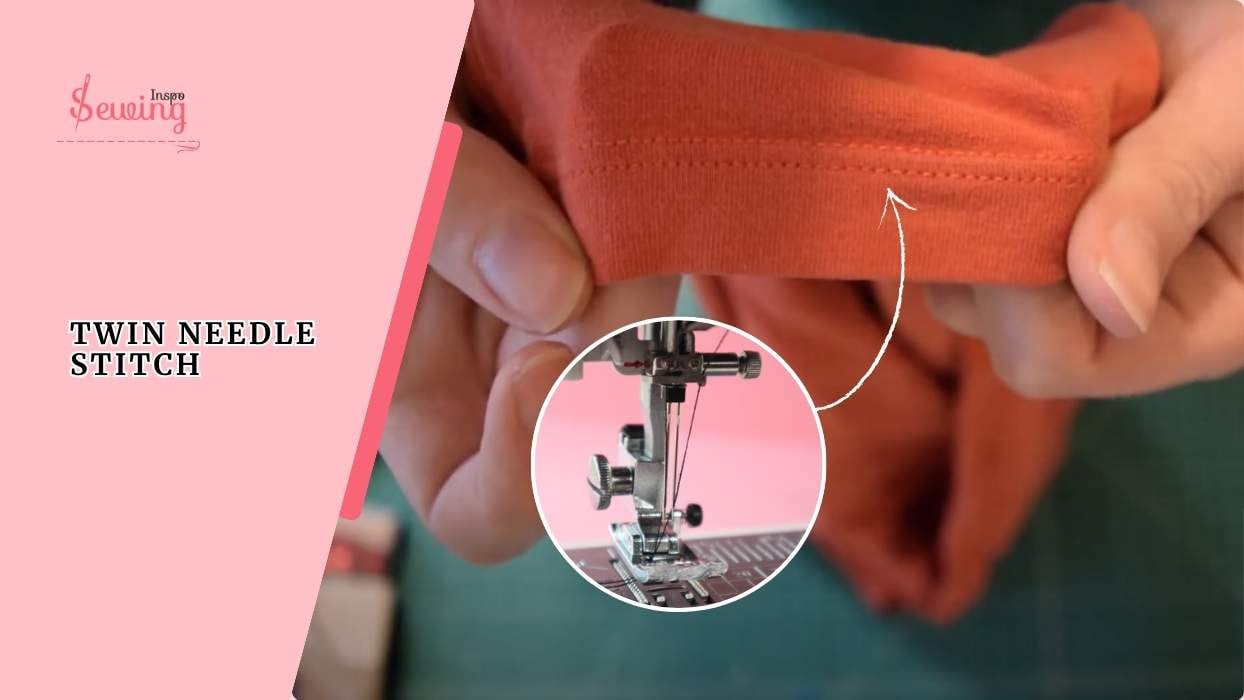
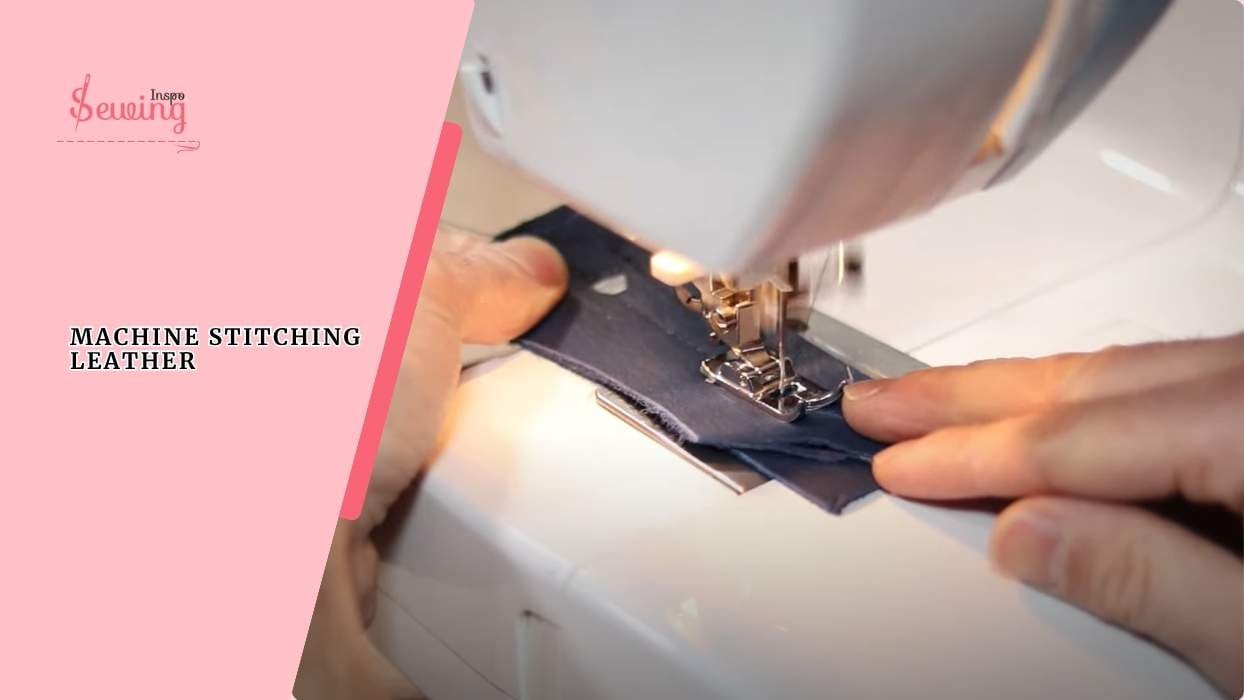
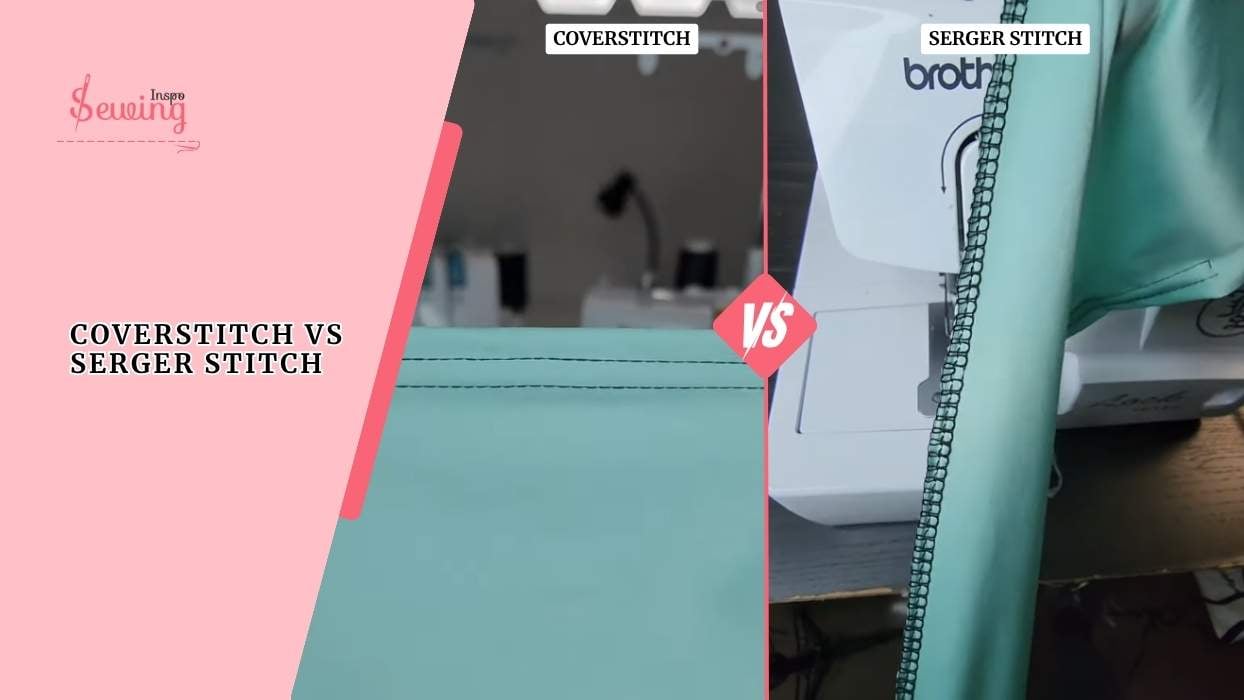
Leave a Reply